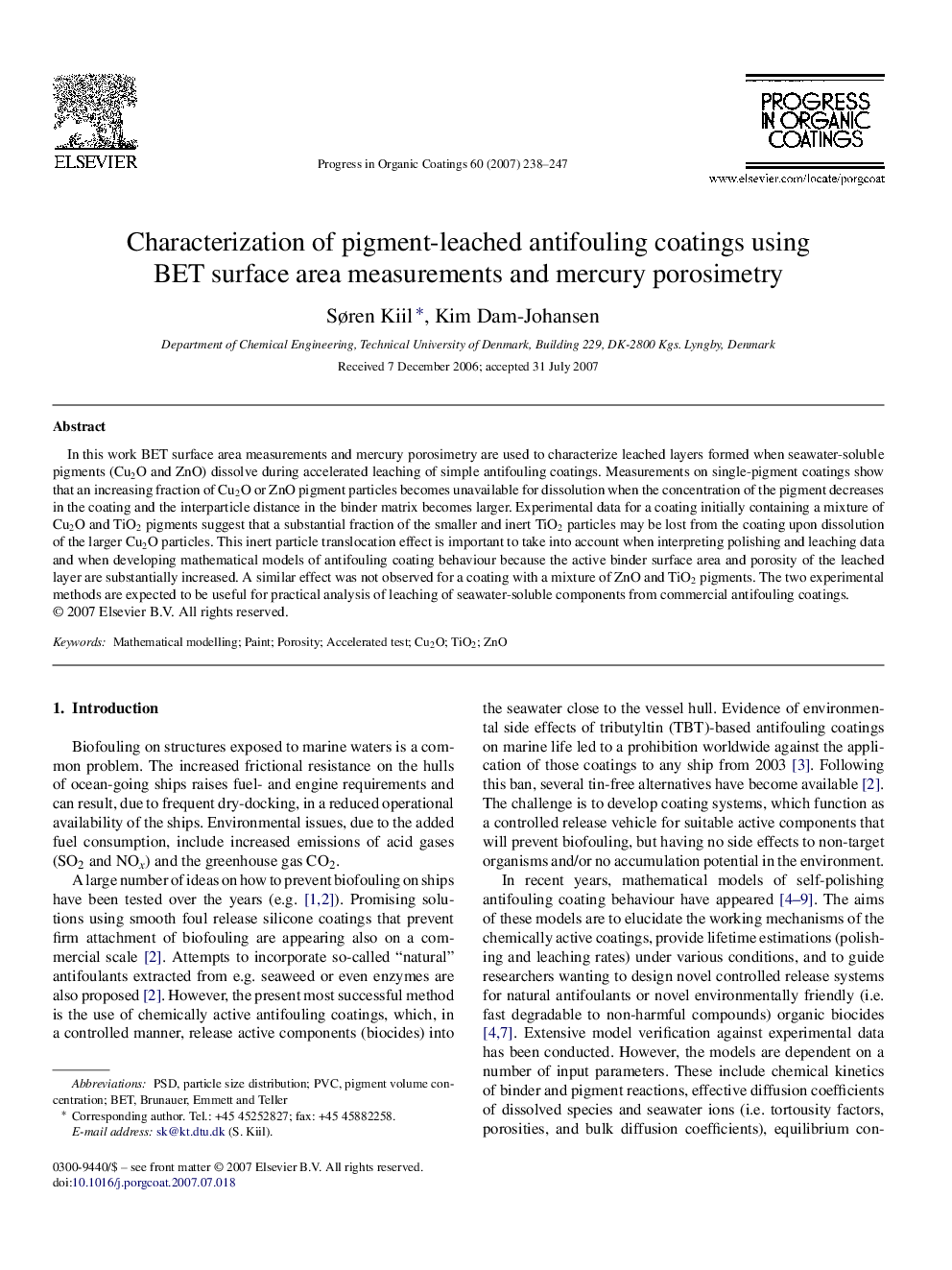| Article ID | Journal | Published Year | Pages | File Type |
|---|---|---|---|---|
| 694120 | Progress in Organic Coatings | 2007 | 10 Pages |
In this work BET surface area measurements and mercury porosimetry are used to characterize leached layers formed when seawater-soluble pigments (Cu2O and ZnO) dissolve during accelerated leaching of simple antifouling coatings. Measurements on single-pigment coatings show that an increasing fraction of Cu2O or ZnO pigment particles becomes unavailable for dissolution when the concentration of the pigment decreases in the coating and the interparticle distance in the binder matrix becomes larger. Experimental data for a coating initially containing a mixture of Cu2O and TiO2 pigments suggest that a substantial fraction of the smaller and inert TiO2 particles may be lost from the coating upon dissolution of the larger Cu2O particles. This inert particle translocation effect is important to take into account when interpreting polishing and leaching data and when developing mathematical models of antifouling coating behaviour because the active binder surface area and porosity of the leached layer are substantially increased. A similar effect was not observed for a coating with a mixture of ZnO and TiO2 pigments. The two experimental methods are expected to be useful for practical analysis of leaching of seawater-soluble components from commercial antifouling coatings.
